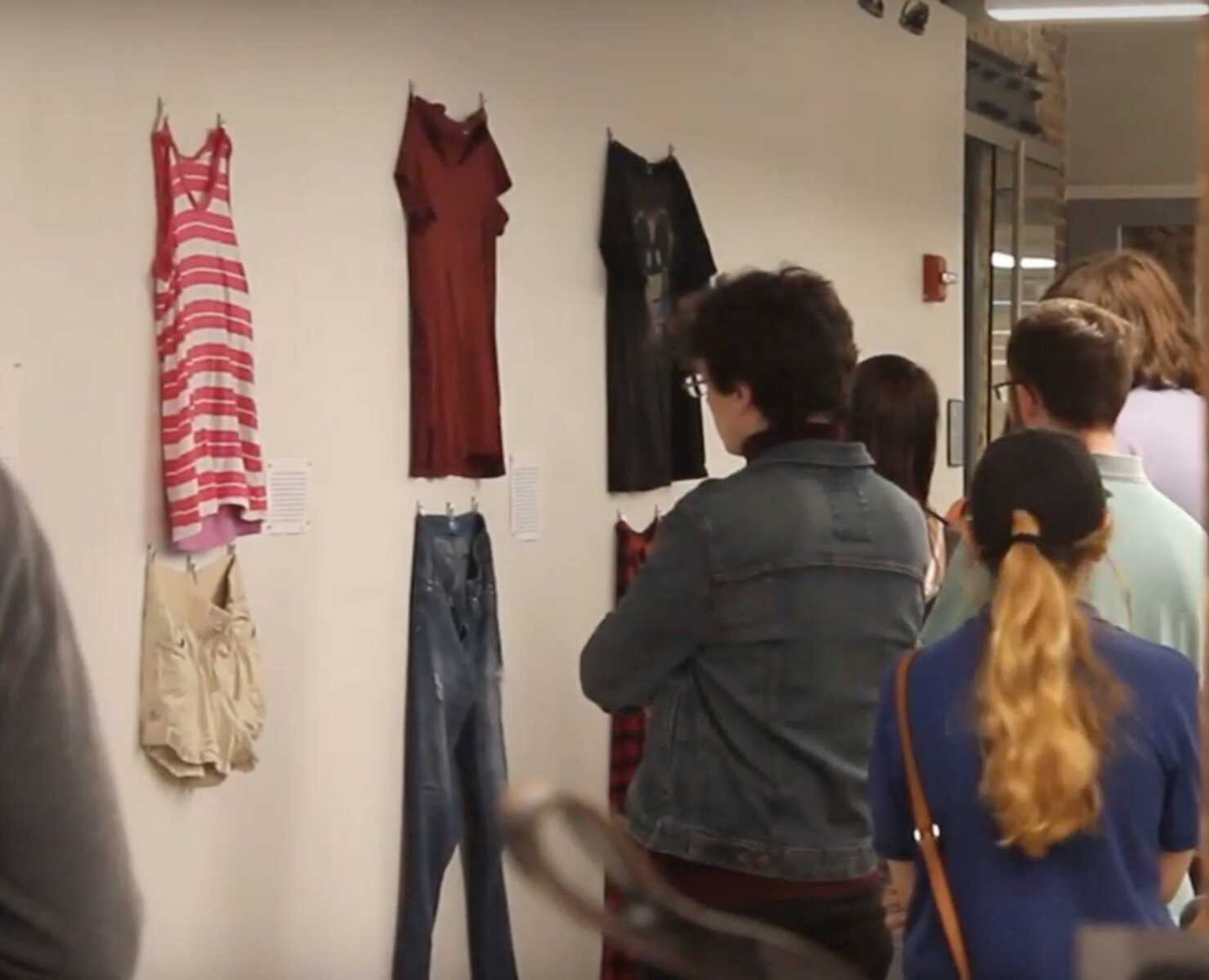Catapult holds “What Were You Wearing” exhibit during Sexual Assault Awareness Month
“What were you wearing?” That is a common question asked of victims of sexual assault, and one senior communication studies major Rachel Fox knows firsthand. As a two-time sexual assault survivor and president of Redhawks Rising, she knew putting her clothes on display would help increase awareness about sexual assault and victim blaming...
“What were you wearing?”
That is a common question asked of victims of sexual assault, and one senior communication studies major Rachel Fox knows firsthand. As a two-time sexual assault survivor and president of Redhawks Rising, she knew putting her clothes on display would help increase awareness about sexual assault and victim blaming.
Redhawks Rising, in conjunction with the Campus Violence Prevention Program, held its “What Were You Wearing?” exhibit premiere Friday, April 5, as a part of First Friday with the Arts. Seven sexual assault survivors, six of them Southeast students, hung the clothes similar to what they were wearing at the time of their attack on the wall of Catapult’s printing room along with thoughts and reflections of their assaults.
Some of the articles of clothing included leggings, tank tops, sweatshirts and jeans. None of the outfits looked the same.
Fox has been open about her assault as a teenager, but she said the exhibit has a new story to tell.
“I've been very vocal about me being sexually assaulted when I was a kid, but I was also assaulted my freshman year of college,” she said. “I think initially, it was the shame that I felt with being assaulted twice; I had a lot of voices telling me that is my fault, and it must have been me because it happened again. And I know a lot of people are in that same boat.”
A panel discussion was held in conjunction with the exhibit. Fox was among two females and one male who took questions from the crowd, told their stories of surviving sexual assault, what policies have changed and what work still needs to be done for survivors.
“What Were You Wearing?” is a collaborative effort between Donna St. Sauver, a licensed professional counselor and the director of the Campus Violence Prevention Program, and Joni Hand, an associate professor of art history and co-coordinator of Catapult’s gallery. St. Sauver said she and Hand were trying to collaborate on the display for a while, but it was a coincidence it worked itself out during Sexual Assault Awareness Month.
“[Redhawks Rising] went to a conference last year and saw an art exhibit of “What Were You Wearing?” And so the survivors decided that they wanted to do that on campus,” St. Sauver said.
Fox still had the clothes from her second assault but said she has not worn them since then. She searched through the racks of Goodwill to find a similar outfit she wore during her first assault.
“It was actually really emotional trying to flip through hangers and clothes and try to find ones that look like the ones I was wearing. And I found ones that looked really similar,” Fox said. “Seeing them today on the wall and reading the story next to it and just seeing like, ‘That's what I looked like,’ was really emotional. It's kind of like reliving it.”
Fox, St. Sauver and Hand believe “What Were You Wearing?” will continue to encourage conversation about sexual assault.
“I think Cape needs an awakening, a rude awakening, too,” Fox said. “I think we're really quiet about topics like sexual assault — it's taboo. It's not fun to talk about. And I agree, but it's needed. It's necessary if we ever want to see some kind of change.”
St. Sauver has ideas on how to see change within the community.
“We just want to talk about sexual assault, acknowledge that it happens at a level that's much too high in our population,” St. Sauver said. “And the problem is very complicated. There's not just one small solution. It really is changing our culture and changing our beliefs around sexual assault.”






